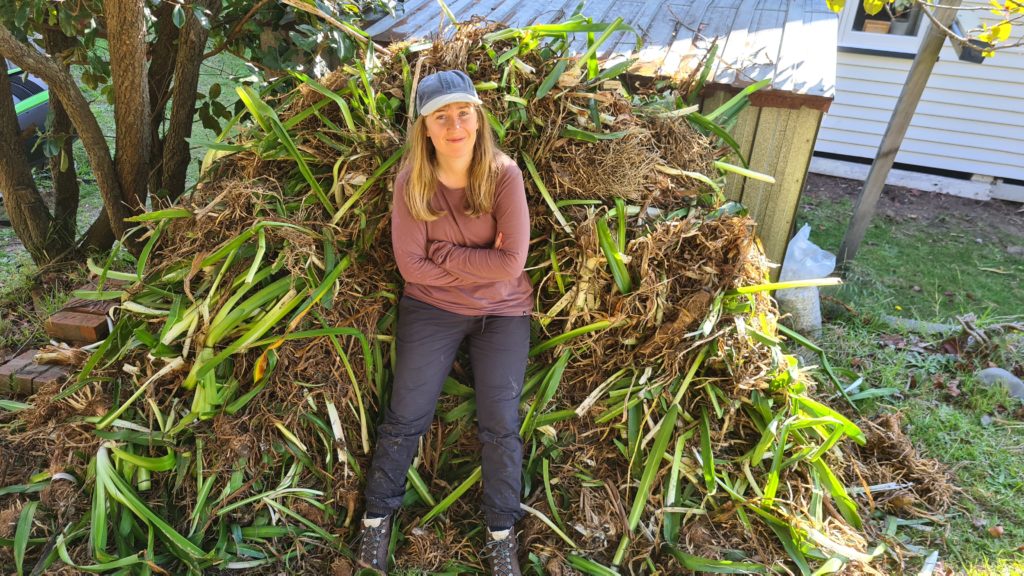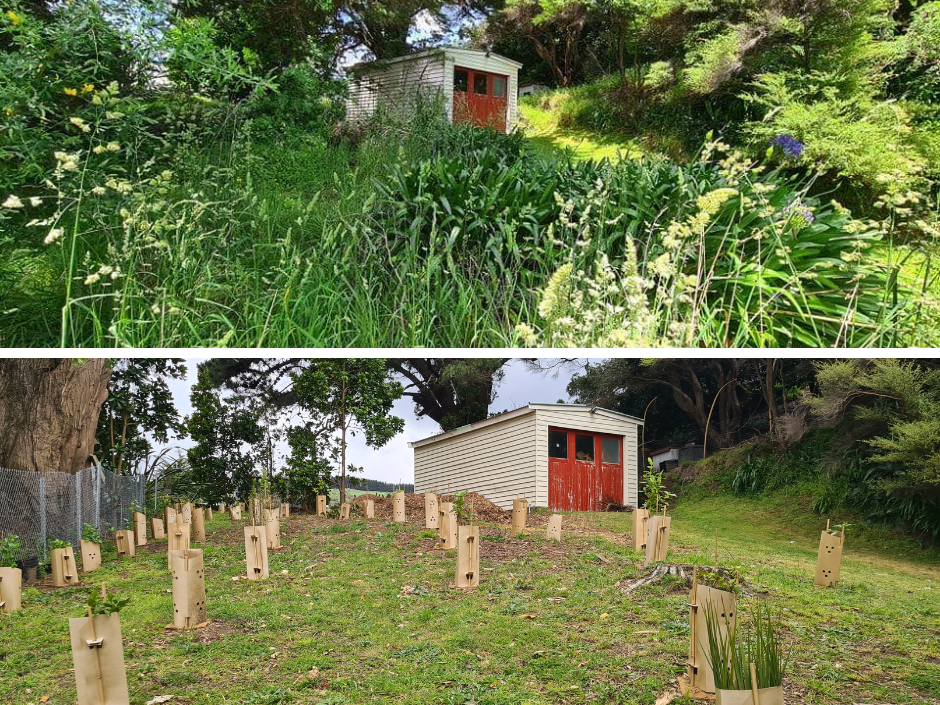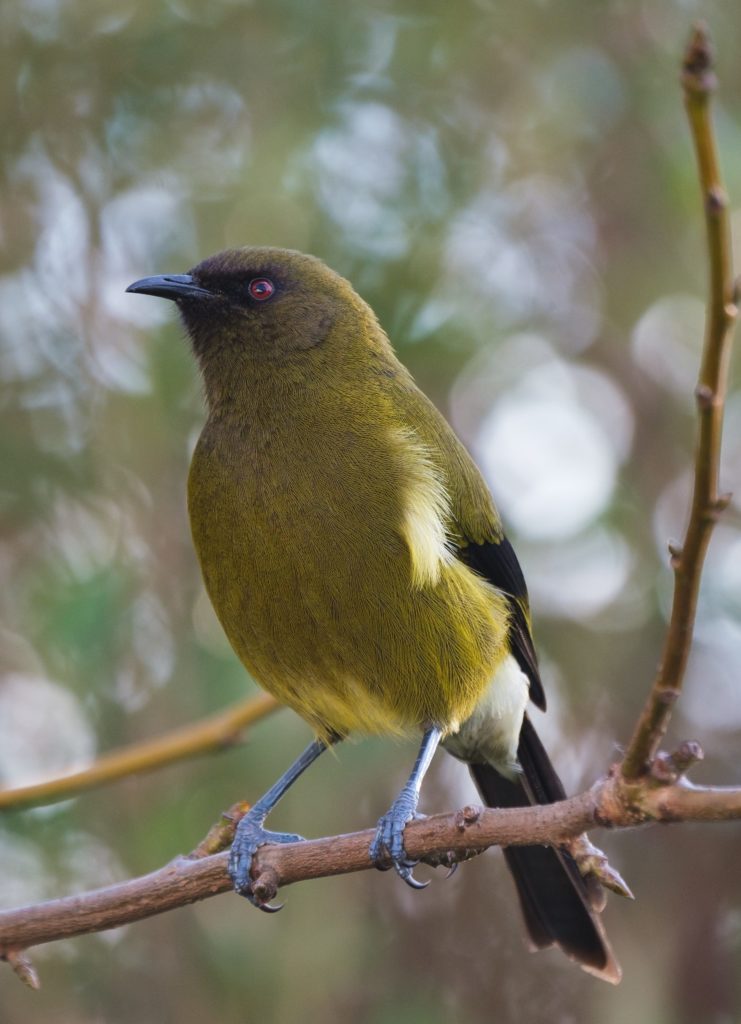When wildlife photographer Holly Neill and her partner moved into their new home on the Kāpiti Coast in late 2020, the garden was choked by weeds. In just two short years, they’ve planted 400 natives, turning a maze of weedy agapanthus, tradescantia and bare grass into the beginnings of a wild wonderland. We caught up with Holly to discover what it takes to turn your backyard into a native plant paradise.

Roots and all

While most new homeowners might turn their hand to renovating, Holly had other plans. “Thankfully, the house was in good nick, so we’ve just gone full noise on the garden,” she says.
“There’s a patch of mature kānuka trees in our backyard, but they were surrounded by agapanthus,” Holly explains. To create room for natives, they needed to tackle the tenacious weed. Underneath the showy mop of glossy leaves and tall flowers, agapanthus is a nightmare of worm-like roots. Because it can resprout from a tiny root fragment, you have to dig out everything. “The two of us dug out around two tonnes by hand,” she says. “I had bad dreams about root systems for a while after that.”
Not only can they outcompete native plants, but weeds like agapanthus aren’t great mates with our native fauna either. During the haul-out operation, Holly didn’t see any insects and only saw three spiders amongst the tangle.
It was a good day when the last load went to the green waste. “It was so rewarding because as soon as we’d cleared it, we realized the potential for kawakawa and other native plants to self-seed there,” Holly says.
A growing addiction

With the pesky plants gone, they loaded the soil up with rich compost and began planting in earnest. Holly had done lots of research and was determined to ecosource her plants. Putting in plants native to your region “is great because you know they’ll grow and are used to your conditions,” she says.
Holly reckons she’s planted around 400 native trees, shrubs, and groundcovers on their modest 800m2 section – she even managed to plant 70 plants in one day! Every available space is now filled with plants. “Now I just have to be patient and be on weed patrol,” she says.
It’s early days for the garden, but Holly knows the real rewards will come in five years’ time. Because she spends her free time photographing birds, she’s keen to attract wildlife to her backyard. “The dream is that I won’t even need to leave the house to take photos of birds,” she laughs. Some critters have already found a safe haven there – Holly hit headlines with her bustling tree wētā hotels earlier this year.
Why go wild?
There are so many benefits to regenerating native bush in your backyard – it creates a habitat for native wildlife, enriches and stabilises the soil, enhances water quality, and connects you to the environment.
We asked Professor Bruce Clarkson (an expert in restoring native ecosystems in urban settings) what advice he has for someone getting started on a regeneration project. Bruce said there are some simple steps you can take to ensure your project is a success:

- Plan
- Gather information – go for a walk in your neighbourhood and visit local areas with thriving native plants.
- Create a map – “Maps are critical,” Bruce says, and they can be as simple as an annotated Google Earth screenshot of your site.
- Keep it local – find out what plants used to grow in your area. By matching the right plants to the right place, you’ll give your garden a much better chance at success. Many councils have great resources to help you design a sustainable native garden.
2. Prepare
- Clear the site of weeds.
- Boost your soil with compost and well-rotted manure (although many native plants don’t need this extra help).
3. Plant
- Ecosource your plants – find plants grown from local seeds.
- Plant in autumn and spring in dry areas and mulch around the plants for the best chance of survival.
- Keep planting! “Enrichment planting needs to start after your original trees and shrubs have been in the ground for 7-15 years,” Bruce says.
A safe haven
If you’re keen to attract birds, bugs and lizards to your backyard, trapping is essential. “Wildlife needs two major ingredients – suitable habitat with year-round food supply and low numbers of pests,” Bruce says.
It’s also important to set traps to keep introduced predators away from vulnerable young plants. “You can have all the native plants you want, but if there are a dozen possums hanging out in the area, that’s no good,” Holly says. So far, she’s caught possums, rats, mice, and hedgehogs in her section.
We can’t wait to see how Holly’s garden looks in five or even ten years’ time.

